You’ll discover that Pennsylvania’s native plants offer the perfect solution for creating gardens that naturally complement your local ecosystem. These indigenous species have adapted over thousands of years to thrive in your region’s specific soil conditions, rainfall patterns, and seasonal temperature swings. Whether you’re working with dense woodland shade or bright meadow sun, there’s a compelling reason why certain native varieties will outperform any exotic alternatives you might consider.
Contents
- 1 Pennsylvania’s Soil and Seasonal Patterns
- 2 Woodland Wildflowers for Pennsylvania
- 3 Pennsylvania’s Deciduous Canopy Species
- 4 Pennsylvania’s Native Understory Shrubs
- 5 Selecting the Right Native Plants for Your Garden
- 6 Frequently Asked Questions
- 6.1 Where Can I Purchase Native Pennsylvania Plants Locally?
- 6.2 How Do I Propagate Native Plants From Seeds or Cuttings?
- 6.3 What Are the Legal Requirements for Collecting Native Plants From Wild Areas?
- 6.4 How Long Does It Take for Native Plants to Become Established?
- 6.5 Which Native Plants Attract Specific Pollinators Like Butterflies or Hummingbirds?
Pennsylvania’s Soil and Seasonal Patterns
When you’re selecting native plants for Pennsylvania, understanding the state’s diverse soil landscape becomes your foundation for success. Pennsylvania’s twelve soil regions create distinct growing conditions, from sandy Eastern Lake Shore soils with rapid drainage to clay-rich Glaciated Appalachian Plateau areas with slow water percolation.
Seasonal variations affect soil moisture differently across regions. Alfisols in Ridge and Valley provinces retain moisture well, while fragipans restrict water movement in glaciated soils. You’ll find Mount Lucas silt loam exemplifies poorly drained conditions, contrasting sharply with Hazleton’s sandstone-derived soils that drain quickly throughout growing seasons. These soil types represent four soil orders that occur throughout Pennsylvania’s diverse landscape.
Woodland Wildflowers for Pennsylvania
Pennsylvania’s diverse woodlands support native wildflowers that bloom throughout seasons, from early spring ephemerals to summer species, plus understory plants and woodland grasses adapted to shade. Woodland areas also feature native asters and goldenrods that provide late-season color and support pollinators in shaded environments.
Wild Ginger (Asarum Canadense)
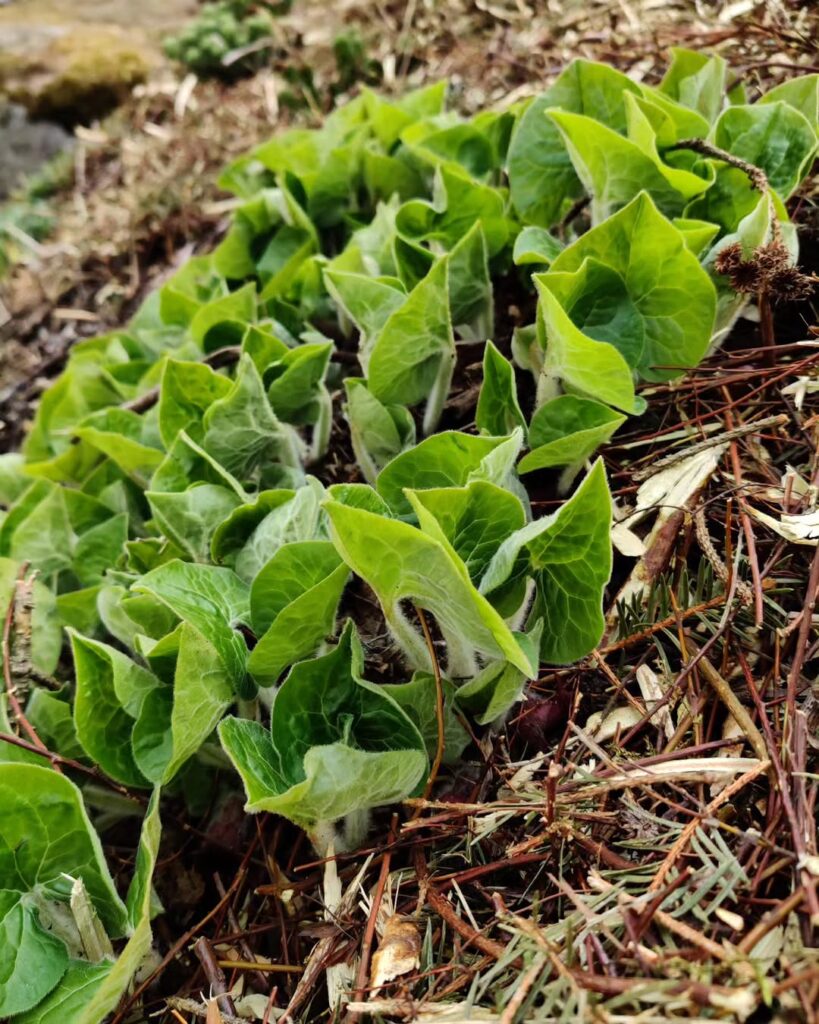
Wild Ginger (Asarum canadense) is a six-inch tall perennial ground cover native to eastern United States forests. This woodland wildflower features large, heart-shaped green leaves and produces distinctive red cup-shaped flowers in early spring that bloom close to the ground, often hidden beneath the foliage.
An excellent choice for shady woodland gardens, Wild Ginger spreads via rhizomes to form dense coverage within 2-3 years. Despite its name, it’s unrelated to culinary ginger but earned this moniker from its aromatic roots, which early Americans used as a ginger substitute. Also known as Woodland Ginger or Indian Ginger, this deer-resistant native pairs beautifully with ferns and other woodland plants while helping prevent invasive species establishment. The flowers are notable for having twelve stamens and lacking petals entirely.
- Hardiness: USDA zones 3-8
- Light: Part shade to full shade
- Water: Consistent moisture, moist conditions preferred
- Soil: Rich, humus-rich, acidic soil (pH below 6.8); tolerates clay, loam, and sand
- Fertilizer: Not typically required in rich woodland soils
- Pest/Disease Resistance: Deer resistant, generally pest and disease free
- Growth Rate: Moderate; forms solid ground cover in 2-3 years
Bloodroot (Sanguinaria Canadensis)

Bloodroot (Sanguinaria canadensis) is a beloved native Pennsylvania wildflower that heralds spring with its pristine white blooms in March and April. This early-emerging woodland plant produces distinctive flowers with bright yellow centers that last only 1-2 days, followed by unique cylindrical seed pods that ripen in summer.
A member of the poppy family, bloodroot thrives as a ground cover in rich deciduous forests throughout eastern North America. The plant spreads naturally through ant-dispersed seeds and forms colonies in shaded woodland settings. Its bitter, toxic leaves protect it from browsing animals, while its flowers attract native mining bees for pollination. The plant gets its name from the acrid red-orange juice that flows from its roots and stems when cut, which Native Americans historically used for dye and war paint.
- Hardiness: Native throughout eastern North America, zones 3-8
- Light: Part shade to full shade
- Water: Moist to wet conditions, tolerates some dryness
- Soil: Rich, well-drained woodland soils, circumneutral pH 6.8-7.2
- Fertilizer: Benefits from natural leaf litter and organic matter
- Pest/Disease Resistance: Excellent, toxic compounds deter herbivores
- Growth Rate: Spreads rapidly as ground cover through seed dispersal
Trout Lily (Erythronium Americanum)
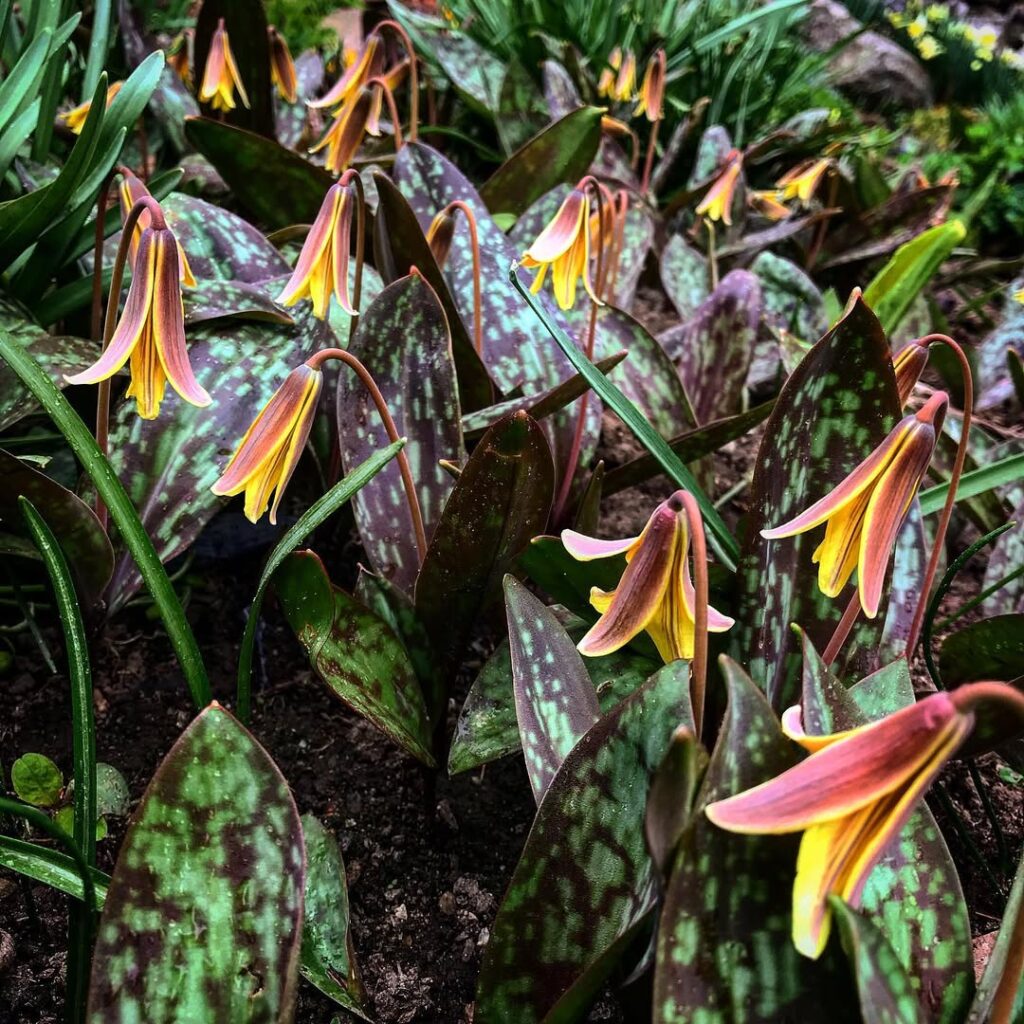
Trout Lily is a charming native perennial wildflower that reaches up to 8 inches tall, featuring distinctive mottled leaves that resemble trout markings. This spring ephemeral produces bright yellow flowers with six reflexed petals from March through May, completing its above-ground life cycle before the tree canopy fully develops.
Also known as Dogtooth Violet, this true lily thrives in moist deciduous woodlands where it receives dappled sunlight. It often forms large colonies in suitable habitats and makes an excellent seasonal ground cover for woodland gardens when combined with other native spring ephemerals. The flowers display a distinctive structure with six brown stamens exposed as the petals and sepals bend backward.
- Hardiness: Native to eastern North America, cold hardy in Pennsylvania
- Light: Dappled sunlight, requires ample spring sun before tree canopy develops
- Water: Moist conditions, prefers consistently moist soils
- Soil: Acidic soils (pH<6.8), rich in organic matter, well-draining woodland soil
- Fertilizer: None required, benefits from natural leaf litter as cover
- Pest/Disease Resistance: Generally resistant when grown in appropriate conditions
- Growth Rate: Moderate, spreads vegetatively through bulb division to form colonies
Wild Columbine (Aquilegia Canadensis)
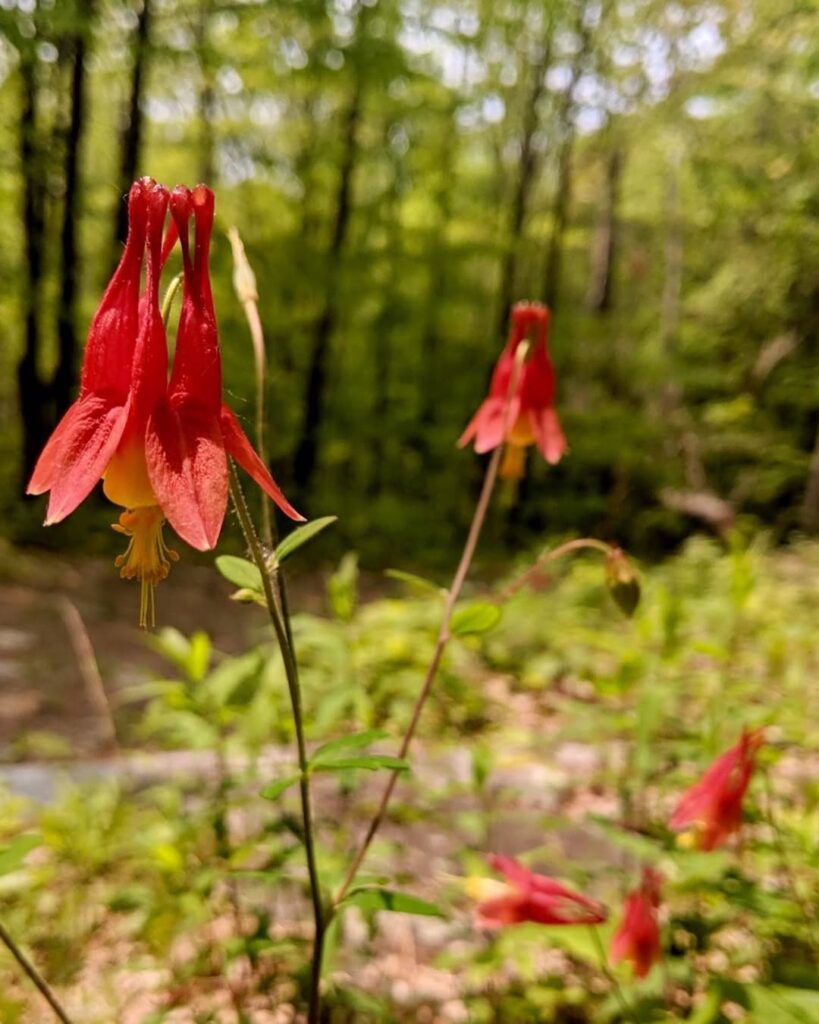
Wild Columbine (Aquilegia canadensis) is a striking native woodland wildflower that brings brilliant red and yellow blooms to Pennsylvania gardens in late spring. Growing 1-2 feet tall with distinctive 1.5-inch flowers held on long stems, this species adds vibrant color to shaded woodland settings. The genus name derives from the Latin word for eagle, referencing the petal shape that resembles an eagle’s claw.
This versatile native plant thrives in various woodland habitats, from rocky slopes to forest edges, preferring calcareous soils and partial shade conditions. Wild Columbine serves as an important nectar source for hummingbirds and butterflies while remaining deer-resistant. The plant produces tiny black seeds that can be easily collected for propagation, with seeds remaining viable for up to three years when properly stored. Seeds develop into tan follicles approximately two weeks after the flowers emerge.
- Hardiness: Zones 3-8
- Light: Partial shade to full shade; tolerates full sun with adequate moisture
- Water: Medium moisture; drought tolerant once established
- Soil: Well-drained, calcareous soils; adaptable to rocky, gravelly conditions
- Fertilizer: Low fertility requirements; thrives in native woodland conditions
- Pest/Disease Resistance: Deer resistant; generally pest and disease free
- Growth Rate: Moderate; easily transplanted and self-seeds readily
Jack-in-the-Pulpit (Arisaema Triphyllum)
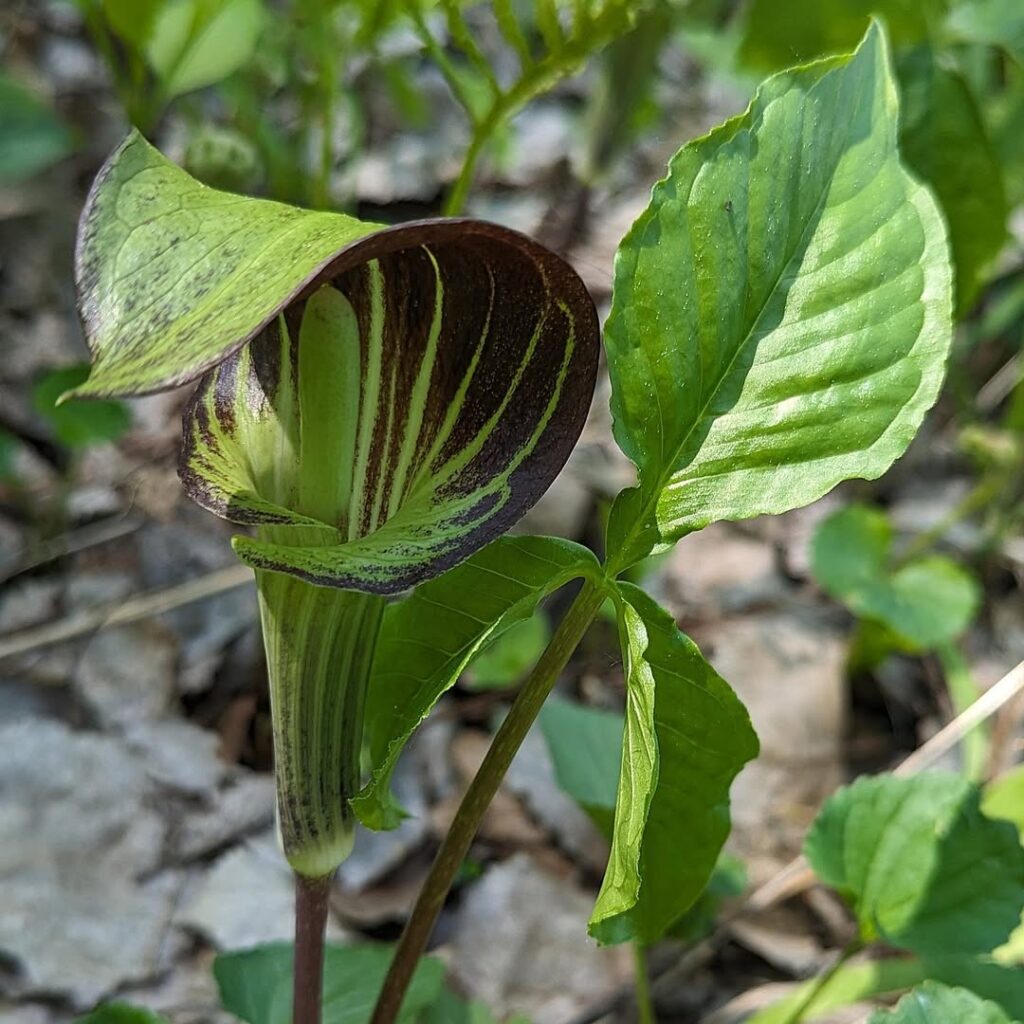
Jack-in-the-Pulpit is a distinctive native perennial wildflower found throughout Pennsylvania’s woodlands and wetlands. This charming plant features a unique hooded flower structure called a spathe that covers the spadix, creating the characteristic “Jack” appearance. The leaves are typically divided into three leaflets, and the plant produces bright red berries in late summer. Growing 1-2 feet tall, it serves as an excellent indicator species for healthy, undisturbed woodland environments and provides important food sources for wildlife while supporting forest floor biodiversity. The plant exhibits remarkable sex change as it matures, with individual plants transitioning from male to bisexual or female flowers depending on their age and vigor.
- Hardiness: Hardy in USDA zones 4-9, well-suited to Pennsylvania’s climate
- Light: Partial shade to full shade; intolerant of direct sunlight
- Water: Consistent moisture required; prefers mesic conditions but not waterlogged soil
- Soil: Moist, well-drained, humus-rich organic soil with high fertility
- Fertilizer: Minimal requirements; benefits from natural leaf litter and organic matter
- Pest/Disease Resistance: Natural calcium oxalate crystals deter mammalian herbivores; generally disease resistant
- Growth Rate: Moderate growth rate; establishes slowly from seed or corm division
Pennsylvania’s Deciduous Canopy Species
Pennsylvania’s deciduous canopy creates diverse forest ecosystems through dominant oak species, specialized wetland trees, and understory shrubs that support wildlife and define regional woodland character. The Northern Hardwood Forest matrix includes sugar maple and yellow birch as key canopy contributors across the state’s ecoregions.
Sugar Maple (Acer Saccharum)
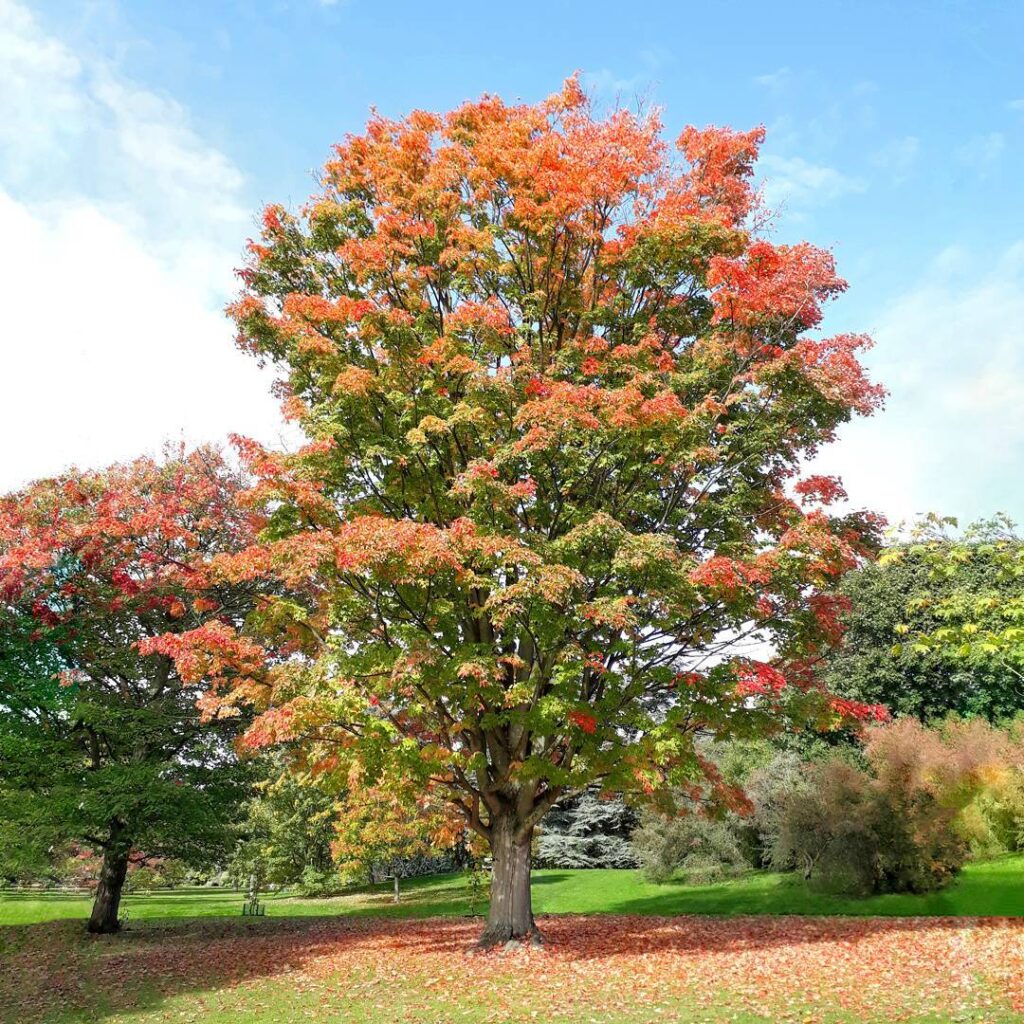
Sugar maple (Acer saccharum) is a magnificent native deciduous tree and key canopy species in Pennsylvania’s woodlands. This large tree can reach heights of 100 feet with a broad, spreading crown and straight trunk. Its distinctive five-lobed palmate leaves create spectacular fall displays in brilliant shades of orange, red, and yellow.
Beyond its ornamental value, sugar maple serves critical ecological functions as a major component of mixed hardwood forests. The species supports wildlife habitat, contributes to biodiversity, and plays an essential role in nutrient cycling. In Pennsylvania’s floodplain ecosystems, sugar maple thrives in rich soils with pH levels ranging from 6.5 to 8.0, forming the primary canopy layer alongside black maple. Economically, it’s prized for maple syrup production and valuable hard maple timber used in furniture and flooring.
- Hardiness: Zones 3-8, well-adapted to Pennsylvania’s climate
- Light: Full sun to partial shade, tolerates various light conditions
- Water: Moderate moisture requirements, thrives on moist sites but tolerates dry conditions
- Soil: Wide variety of soils, prefers calcareous soils and mafic rocks, wet to dry-mesic
- Fertilizer: Generally not required in native settings, benefits from organic matter
- Pest/Disease Resistance: Generally hardy with good natural resistance to most pests and diseases
- Growth Rate: Slow to moderate growth, developing over several decades
American Beech (Fagus Grandifolia)
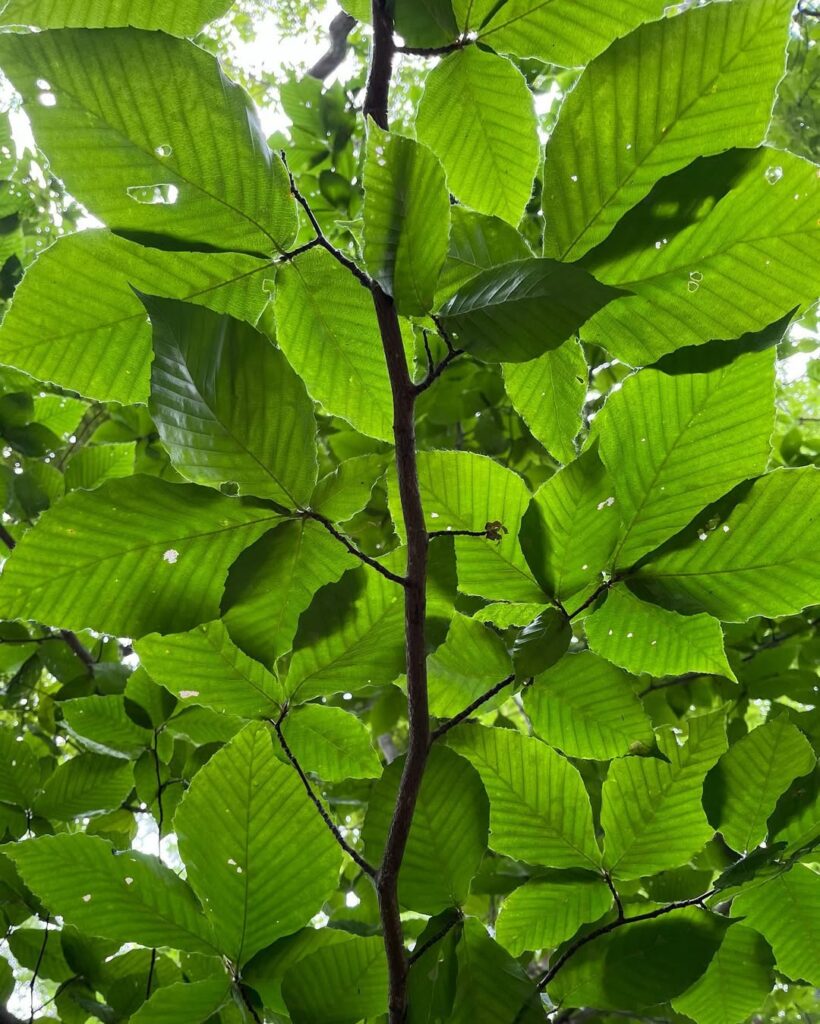
The American Beech (Fagus grandifolia) stands as Pennsylvania’s premier native deciduous canopy tree, reaching heights of 60 feet with its distinctive smooth, light gray bark and oval crown. This slow-growing giant can live up to 300 years, producing glossy elliptical leaves that transform to golden bronze in autumn.
As one of the most shade-tolerant trees in eastern North America, American Beech thrives in Pennsylvania’s moist woodlands and forms climax communities with sugar maple. Its prickly autumn burs contain triangular beechnuts that provide essential wildlife food, while the tree’s impressive canopy creates significant habitat for cavity-nesting birds. The species holds the distinction of being the only Fagus species naturally found in North America.
- Hardiness: USDA zones 4-9
- Light: Full shade to partial shade (highly shade-tolerant)
- Water: High water requirements; needs consistently moist, well-watered conditions
- Soil: Moderate to poorly drained soils; well-drained but moisture-retentive preferred
- Fertilizer: Rich soil beneficial for accelerated growth
- Pest/Disease Resistance: Intolerant of urban pollution, salt, and soil compaction
- Growth Rate: Slow (can be accelerated with favorable conditions)
Eastern White Oak
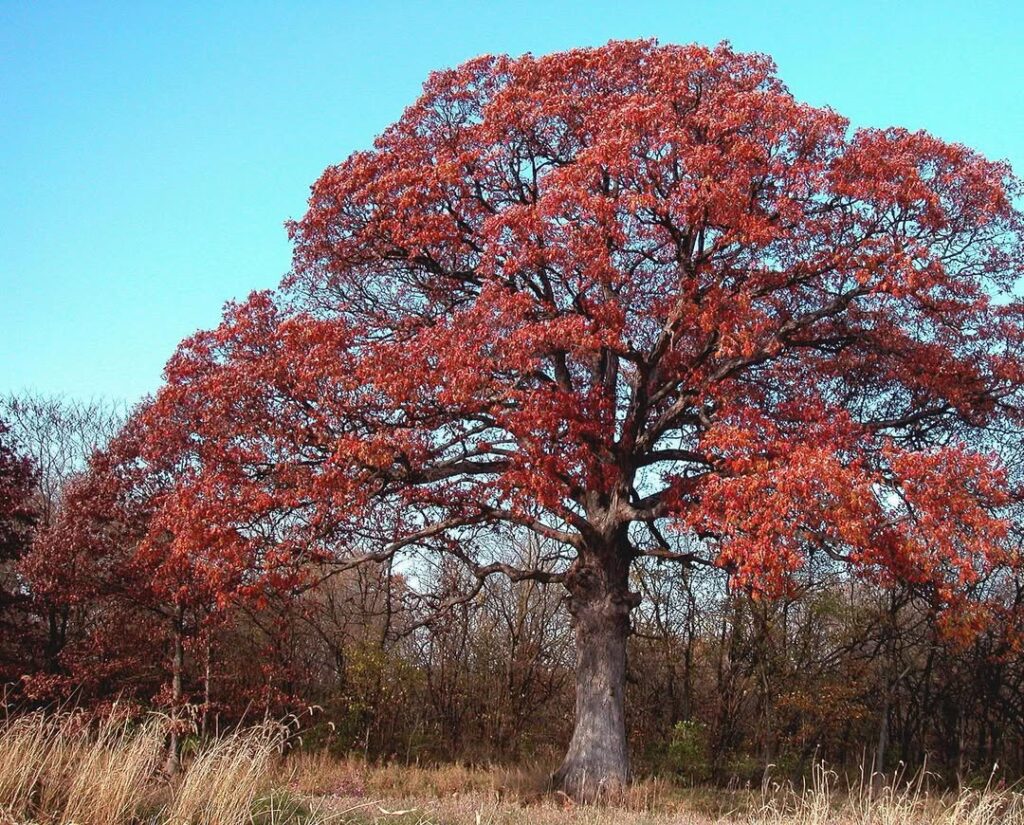
The Eastern White Oak is a magnificent long-lived canopy tree that can reach 60-100 feet tall with an equally impressive 60-80 foot spread. This slow-growing giant can live up to 600 years, developing a massive rounded crown with distinctive horizontal lower branches. Its large obovate leaves display 7-9 rounded lobes and turn brilliant deep red in autumn.
As Pennsylvania’s most important white oak lumber species, this tree produces valuable wood prized for furniture, flooring, and barrels. The Eastern White Oak serves as a keystone species in mature deciduous forests, providing critical wildlife habitat and food through its acorn production. Its combination of longevity, ecological importance, and ornamental value makes it an excellent choice for large landscape plantings where space allows for its grand mature form.
The distinctive light ash-gray bark peels from various parts of the trunk and becomes shallowly fissured and scaly as the tree matures. It is commonly found in Pennsylvania’s diverse habitats, from ridges to valleys, and can thrive in both dry and moist areas throughout the state’s woodlands.
- Hardiness: Cold hardy, suitable for Pennsylvania’s climate zones
- Light: Full sun to partial shade; shade tolerant when young
- Water: Moderate moisture requirements; prefers consistent soil moisture
- Soil: Well-drained, deep, moist soils; tolerates various soil types but avoids shallow, dry conditions
- Fertilizer: Generally not required; benefits from organic matter in soil
- Pest/Disease Resistance: Generally resistant but may be susceptible to oak wilt and some insect pests
- Growth Rate: Slow, particularly in mature specimens
American Chestnut (Castanea Dentata)

Today, the species persists mainly as root sprouts that typically die back before maturity due to the persistent blight. Despite this ecological tragedy, restoration efforts continue through breeding programs and disease resistance research, keeping hope alive for Pennsylvania’s iconic native tree. These magnificent trees once grew up to 100 feet tall and were a dominant force in eastern North American forests before the devastating blight outbreak that began in 1904.
- Hardiness: Zones 4-8, native to eastern North America including Pennsylvania
- Light: Full sun to partial shade, adaptable to various light conditions
- Water: Moderate moisture requirements, drought tolerant once established
- Soil: Acidic, well-draining soils; tolerates clay, loam, and rocky conditions
- Fertilizer: Low maintenance, typically requires no supplemental fertilization
- Pest/Disease Resistance: Highly susceptible to chestnut blight and ink disease
- Growth Rate: Fast-growing when healthy, but modern specimens limited by disease pressure
Tulip Tree (Liriodendron Tulipifera)
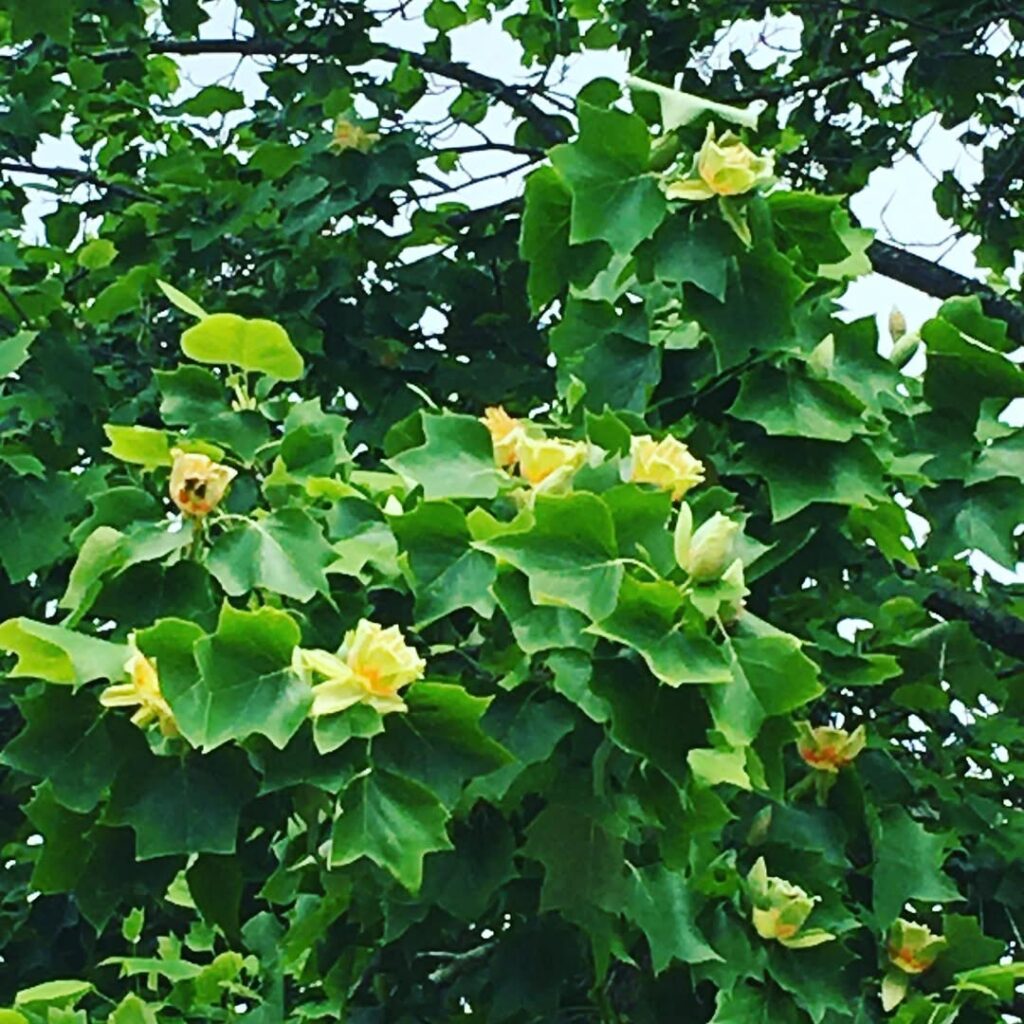
The Tulip Tree is Pennsylvania’s majestic native deciduous species, capable of reaching 70-100 feet in height and living up to 300 years. Distinguished by its unique 4-lobed leaves that turn golden yellow in fall, this fast-growing tree develops from a pyramidal youth form into a broad, oval-crowned canopy. Its late spring flowers provide essential nectar for pollinators while supporting swallowtail butterfly larvae and feeding birds and small mammals with its seeds. As the largest member of the magnolia family, the Tulip Tree holds significant botanical importance among Pennsylvania’s native flora.
This species thrives in Pennsylvania’s rich woodlands and stream banks, preferring deep, well-drained soils in forest coves and lower mountain slopes. While tolerant of various light conditions, the Tulip Tree struggles with drought and soil compaction, making it ideal for large landscapes rather than confined urban spaces. Its ecological value as a canopy species makes it excellent for restoration projects and native woodland gardens.
- Hardiness: Zones 4-9, elevations below 300m in northern range, up to 1,370m in southern Appalachians
- Light: Full sun to shade tolerant
- Water: Consistent moisture required; intolerant of drought
- Soil: Moist, rich, well-drained, acidic soils (pH < 6.8); intolerant of compaction
- Fertilizer: Not typically required in rich, native soils
- Pest/Disease Resistance: Generally free from significant issues under ideal conditions
- Growth Rate: Fast-growing
Pennsylvania’s Native Understory Shrubs
Pennsylvania’s diverse understory shrubs provide essential wildlife habitat and ecosystem services. These include wetland and riparian species, dogwood family members, viburnums and berry producers, plus additional valuable natives. These native shrubs create distinct vertical layers that support different wildlife species by offering varied food sources, shelter, and nesting opportunities throughout the forest canopy.
Spicebush (Lindera Benzoin)

Spicebush (Lindera benzoin) is a versatile native shrub that serves as an ecological powerhouse in Pennsylvania’s woodlands. This multi-stemmed deciduous plant produces fragrant yellow-green flowers in early spring before its leaves emerge, followed by aromatic foliage that turns bright yellow in fall. Female plants bear red berries that provide essential food for wildlife.
The shrub adapts remarkably well to various growing conditions, thriving in both shaded understory environments where it reaches 3-5 feet tall, and full sun locations where it can grow 10-12 feet. Its leaves serve as the primary host for Spicebush Swallowtail butterfly caterpillars, while the berries feed numerous bird species during migration seasons, making it invaluable for supporting local ecosystems. Spicebush naturally flourishes in moist areas such as floodplains, river shores, and areas near streams and lakes throughout Pennsylvania.
- Hardiness: USDA zones 4-9
- Light: Full shade to full sun (very adaptable)
- Water: Moist to medium-moist conditions
- Soil: Sandy loam to clay; prefers rich, well-draining soil
- Fertilizer: Not required; thrives in native soil conditions
- Pest/Disease Resistance: Excellent; no significant problems
- Growth Rate: Moderate
Eastern Redbud (Cercis Canadensis)
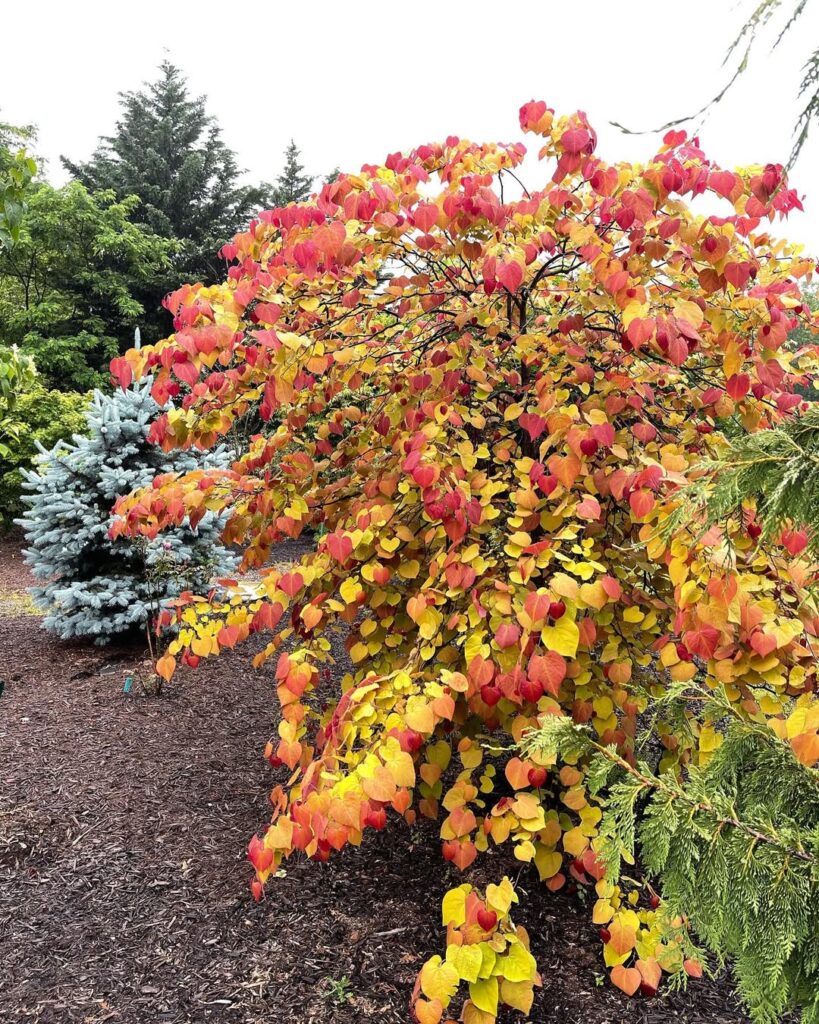
The Eastern Redbud is a charming native deciduous tree that reaches 20-30 feet tall and 25-35 feet wide. Its most distinctive feature is the spectacular early spring display of rosy-pink to purple pea-like flowers that bloom directly on branches and trunk before the heart-shaped leaves emerge.
This adaptable tree thrives in Pennsylvania’s climate and makes an excellent choice for smaller landscapes. The heart-shaped leaves emerge reddish in spring, mature to dark green in summer, and can turn clear yellow in fall, providing multi-season interest for gardeners. The tree develops dark red-brown bark with deep fissures that expose a cinnamon-orange interior, adding textural interest to the landscape.
- Hardiness: USDA Zones 4-9, well-suited for Pennsylvania’s climate
- Light: Full sun to partial shade (2-6 hours of direct sunlight daily)
- Water: Prefers consistently moist conditions; not drought tolerant, especially in full sun
- Soil: Adaptable to clay, loam, sand, and high organic matter soils; prefers well-drained, alkaline soils with pH 6.0-8.0
- Fertilizer: Low maintenance requirements; benefits from rich, organic soils
- Pest/Disease Resistance: Generally hardy with few serious pest or disease issues
- Growth Rate: Medium growth rate with low maintenance needs
Witch Hazel (Hamamelis Virginiana)
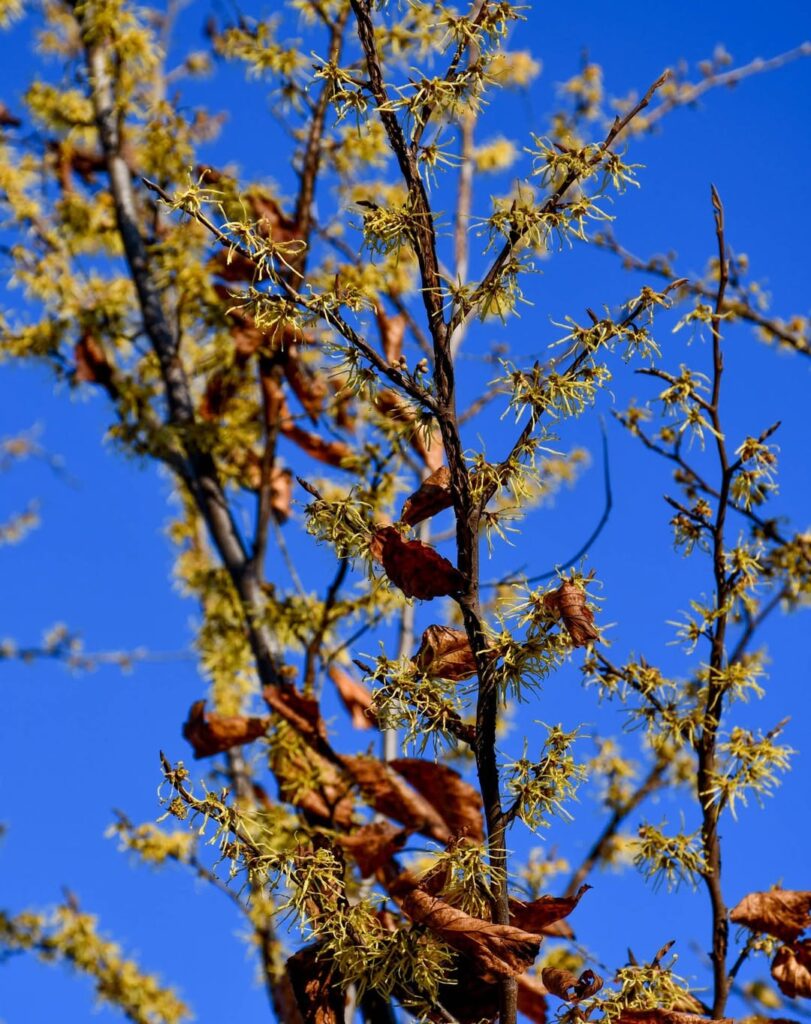
Witch Hazel is Pennsylvania’s last native plant to bloom, producing distinctive yellow, spidery flowers from late October through December. This understory shrub or small tree grows 8-15 feet tall in woodland settings, thriving beneath deciduous canopies and along stream banks. Its unique flowering period coincides with fruit ripening from the previous year.
The plant provides critical late-season nectar for pollinators when few other food sources remain. Its wavy-edged leaves turn bright yellow in fall, creating striking autumn interest just as the unusual ribbon-like flowers appear. Witch Hazel’s dense, multi-stemmed growth habit offers excellent wildlife shelter while helping stabilize soil on slopes.
The mature pods can dramatically eject seeds up to 30 feet from the parent plant, creating an audible popping sound that adds to the plant’s mystique in the autumn landscape.
- Hardiness: USDA Zones 3-9
- Light: Partial shade to full sun, prefers partial shade
- Water: Moderate moisture, tolerates some drought once established
- Soil: Adaptable to various soil types, prefers moist, well-draining woodland soils
- Fertilizer: Low maintenance, minimal fertilizer needed in naturalized settings
- Pest/Disease Resistance: Generally pest and disease resistant
- Growth Rate: Moderate growth rate
Elderberry (Sambucus Canadensis)
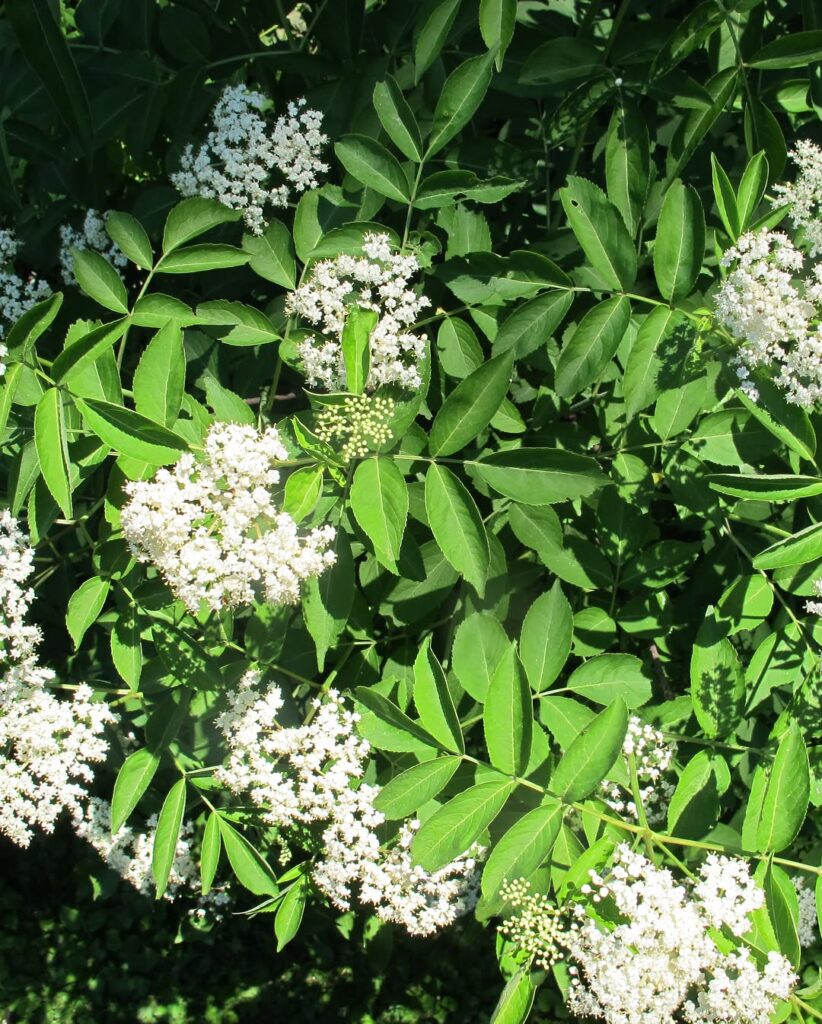
Elderberry (Sambucus canadensis) is a versatile native shrub that exemplifies Pennsylvania’s adaptable understory species. Growing 5-12 feet tall with distinctive flat-topped white flower clusters and dark purple berries, this multi-stemmed deciduous plant thrives in diverse habitats from woodland edges to wetland margins.
This exceptional native provides tremendous ecological value, supporting over 100 bird and animal species while offering nectar for pollinators. Its dense growth creates excellent wildlife cover and nesting sites. The edible flowers and berries have been used for centuries in traditional medicines, syrups, and jellies, making elderberry valuable for both wildlife habitat restoration and sustainable landscaping. Elderberry is particularly rich in vitamin C and may help stimulate immune system function.
- Hardiness: USDA zones 3-8, native throughout Pennsylvania
- Light: Full sun to partial shade; 6+ hours promotes best fruit production
- Water: Medium to high moisture; tolerates wet conditions and occasional drought
- Soil: Adaptable to clay, loam, sand; prefers pH 5.5-6.5, tolerates up to 8.0
- Fertilizer: Low requirements; benefits from organic matter in poor soils
- Pest/Disease Resistance: Generally resistant with few serious issues
- Growth Rate: Medium growth rate with moderate maintenance needs
Serviceberry (Amelanchier Canadensis)
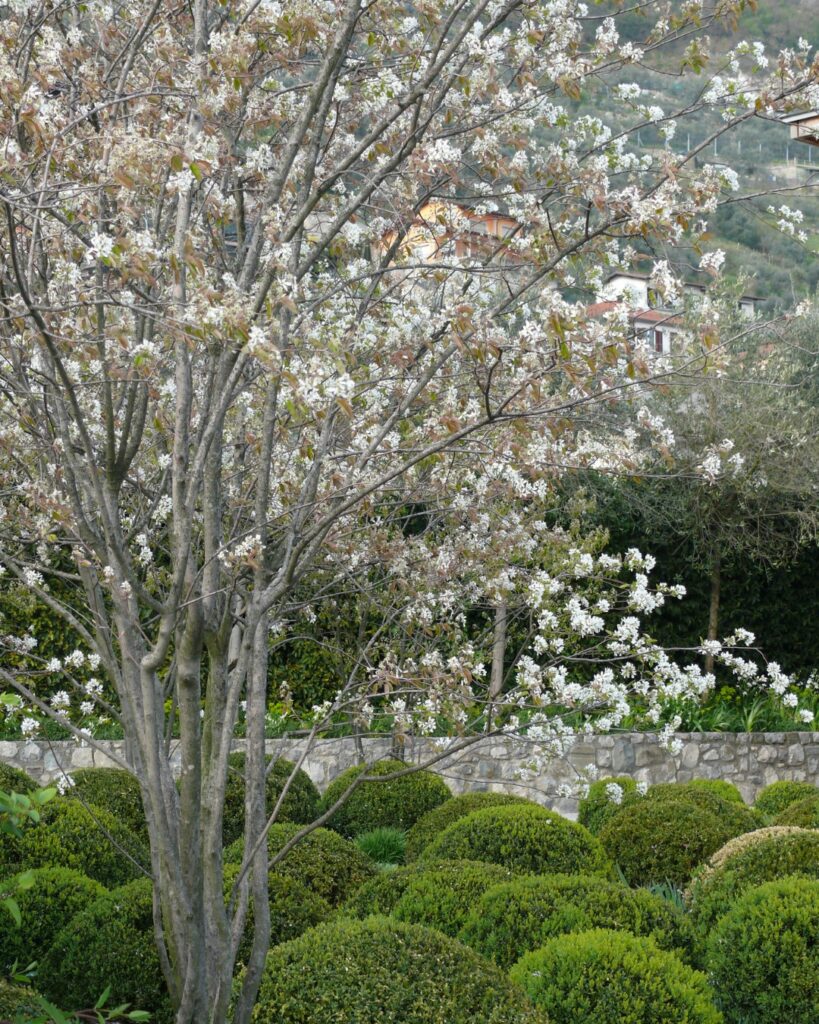
Serviceberry (Amelanchier canadensis) is a versatile native understory plant that grows as either a small tree or multi-stemmed shrub, reaching 6-20 feet tall. This Pennsylvania native produces stunning white blossoms in early spring before leaves emerge, followed by edible crimson fruits in summer and brilliant orange to rusty-red fall foliage.
Historically documented in southeastern Pennsylvania, serviceberry thrives in moist woodland environments and provides exceptional wildlife value. The apple-like berries feed birds and wildlife, while spring flowers offer important nectar for bees. The fruits are highly nutritious, containing significant amounts of iron, calcium, manganese, magnesium, and fiber. Its adaptable nature makes it excellent for naturalized landscapes and woodland gardens, though some varieties spread aggressively through underground runners.
- Hardiness: Zones 3-8, well-suited to Pennsylvania’s climate
- Light: Full sun to partial shade, excellent understory species
- Water: Prefers consistently moist, well-drained conditions
- Soil: Acidic soil pH 5.5-7.5, adaptable to clay and sandy textures
- Fertilizer: Minimal requirements, benefits from organic matter
- Pest/Disease Resistance: Susceptible to various issues but damage typically cosmetic
- Growth Rate: Moderate, may spread through stolons or rhizomes
Selecting the Right Native Plants for Your Garden
When you’re choosing native plants for your Pennsylvania garden, success depends on matching each species to your specific site conditions. Start by evaluating your soil type, available light, and moisture levels. These planting strategies guarantee your plants will thrive with minimal maintenance.
For shaded woodland areas, consider sugar maples, bloodroot, or white baneberry. If you’ve got sunny, open spaces, try black-eyed Susan, purple coneflower, or native grasses like little bluestem. The ecological benefits include supporting local wildlife, improving soil health, and creating resilient landscapes that resist pests and diseases naturally while requiring less water and care.
Consider replacing portions of your lawn with native meadow gardens, as lawns are often sterile environments that lack the food and shelter wildlife needs to survive.
Frequently Asked Questions
Where Can I Purchase Native Pennsylvania Plants Locally?
You can purchase native Pennsylvania plants at local nurseries like Redbud Native Plant Nursery, Edge of the Woods, or Bowman’s Hill Wildflower Preserve. Online retailers also offer native species delivery options.
How Do I Propagate Native Plants From Seeds or Cuttings?
Many native species require 60-90 days of cold stratification before germinating. You’ll master seed stratification techniques by mimicking winter conditions, while cutting propagation methods work best using hardwood cuttings planted during dormancy.
What Are the Legal Requirements for Collecting Native Plants From Wild Areas?
You’ll need collection permits from USDA Forest Service District Offices for ethical foraging of native plants. Pennsylvania’s conservation policies under the Wild Resource Conservation Act strictly regulate collecting rare, threatened, or endangered species.
How Long Does It Take for Native Plants to Become Established?
You’ll see establishment timeline varies considerably based on growth conditions. Herbaceous plants typically reach maturity in 2-3 years, while woody species need 3-5 years. Proper watering, weeding, and site preparation accelerate establishment success.
Which Native Plants Attract Specific Pollinators Like Butterflies or Hummingbirds?
You’ll find pollinator preferences vary greatly – milkweed attracts monarchs, cardinal flower draws hummingbirds, and bee balm serves both. Creating successful butterfly gardens requires matching specific plants to targeted pollinators’ feeding needs.
